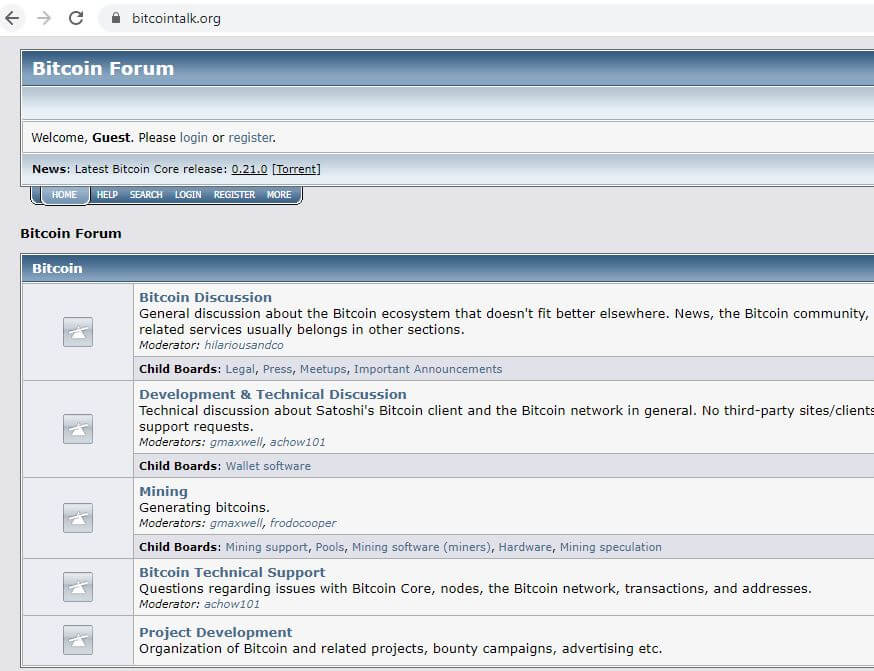2021-12-18 03:00 |
Recreating legacy systems on top of bitcoin is not the goal — designing to engage individuals in new ways should be.
“The computer can be used as a tool to liberate and protect people, rather than to control them.” - Hal Finney
The internet was fundamentally designed to connect machines, not people.
Over the eons of time, the intersection between the marketplace and human engagement has been where humans love to play and explore the possible. From early hominids bartering around the campfire or the haggling in ancient village open-air markets, to online e-commerce, banking and finance, we dream and visualize what we might generate and then engage in exchange to make it happen. We meet new people, negotiate prices and terms of a deal, and in short, create and build from the engagement. Both the “hardness” and durability of the currency, as well as any intermediation or brokerage of the engagement, deeply affect the quality of our engagement with one another. Hence, both the “hardness” of money and actual “engagement design” have everything to do with our quality of life, and provide the trajectory to our progress and development. This is of paramount importance as we travel further into the digital age where tomorrow’s marketplace, commerce and financial integration within the engagement design of gaming and social media de-materialize analog commerce and develop enormous global digital economies.
However things aren’t currently looking too good. Legacy-thinking and centralized industrial design have migrated from the analog onto new digital platforms. We are now realizing that this forceful fit of old design on top of new technology has widespread social and public health repercussions.
“We are called to be architects of the future, not its victims.”- R. Buckminster Fuller.
“Skeuomorphic design” as explained in a presentation by Andreas Antonopolous, an early Bitcoin evangelist, is when the shadow of existing legacy design is overlayed onto brand new technology unintentionally replicating the past. Andreas used the example of the steering mechanism on the first automobile. He asked his audience: what was the first design used to steer the wheels of the novel “horseless carriage?” You have to chuckle it’s so “skeuomorphically” obvious: horse reins!
The takeaway from this valuable presentation by Andreas is that we frequently continue to think and behave in a scripted, stereotypical fashion as new technology emerges; and because we have not creatively explored the possible correlating to it, we logically overlay the comfortably familiar; we overlay old design upon what is new and potentially revolutionary, stifling its potential. We will continue to do this to the detriment of our own individual and collective health, safety and cost, unless we first value and then design with recreative wisdom, seeking biomimetic attunement with the essential human biologic design. Design which overtly or covertly forces the square peg into a round hole for the sake of control and profit is nothing less than the arrogance of man dominating Nature, as opposed to playing and designing in attunement with her.
So from this old gal’s perspective, this is the huge deficit in much of today’s software and applications design, and quite frankly, why I'm writing this series of “Satoshi’s Seed” articles and sounding the alarm. Contemporary design, regardless of technological advances and breakthroughs, is often overlayed with skeuomorphic centralized industrial design, unable to effectively re-create itself (please refer to my previous article: “Bitcoin’s Satoshi’s Seed: From Descartes To Quantum Play”).
Unfortunately, this narrowness in legacy thinking has been further exacerbated and enhanced by the actual digitization of engineering and design itself. There is research out of NASA JPL indicating that the best and most creative problem-solving engineers and designers were not those tireless “young geniuses” with impeccable MIT credentials who had learned their high-tech engineering skills from a two-dimensional screen. As it turns out, the super-star engineers and designers at JPL, the best creative thinkers and problem-solvers, were those who had a rich foundation developed from creative problem-solving in the three dimensional real-world; the real-world “tinkerers.” Neuroscientific research supports rich eye-hand experiences as enhancing multi-dimensional problem-solving.
Today we have this beautifully scarce, decentralized and immutable digital Bitcoin protocol that fills us with hope. We tightly cling to the vision of a more individually-empowered internet, one in which products, services and experiences are curated to who we are and what we want and aspire to, rather than what our centralized programmers tell us to be, and then measure and validate us on. Bitcoin has been described as revolutionary technology, an equivalent to “digital fire,” the purest thermodynamic energy ever available to humans. How will Bitcoin Layer 2 and 3 application developers and designers proceed? Will they simply throw some “horse reins” on top of it all to steer us forward, and hope for the best? If not, what then is the meta-design for decentralized, distributed applications and solutions which will not only complement but exponentially transform the Bitcoin protocol-base into the revolutionary decentralized and empowering user-based internet we all want?
“You never change things by fighting the existing reality. To change something, build a new model that makes the existing model obsolete.” - R. Buckminster Fuller
I submit that the solution to skeuomorphic design is not simply technological, or putting the onus on the user to curtail their use of existing platforms, but a personalized re-creative integration of the exploration of the possible: play! We need to digitally design for the biologically analog, the self-sovereign identity, and can only do so effectively by knowing and studying the analog world and the nature of its diverse biologic design. We must not only decentralize money and financial systems, but decentralize digital programming itself by integrating cross-disciplinary knowledge and approaches while focusing on personalization to empower each unique individual. So unlike the behaviorist social control of centralized programming, a recreative self-sovereign identity goes beyond not only user control and ownership of data, its transportability and interoperability, but identifying, corresponding with and scaffolding upon each individual’s intrinsic motivational drives. If humans are to be self-sovereign and break free from centralized digital bondage, each of us must self-author and drive our own programming through recreating our unique self-sovereign identity. And as each of us already knows, our individual identity, who we are, does not consist of only objective and historic data.
Some older people, or those with a strong internal locus of control, may ridicule the sensitivity many young people feel these days and their focus on their “feelings.” Consider this: perhaps their behavior is simply compensation to their life-long “measured and managed” programming where they have been valued for their compliance and objective data, and not who they are or aspire to become. These young adults know at a deep visceral level that the foundational part of their essential selves has been hijacked and suppressed and is now seemingly vacant and missing. We all need access to developing our self-sovereignty, and identifying our meaning and purpose in life. This can happen when engagement design is disintermediated and we have direct access to self-generated, self-motivated and self-sustained authentic engagement so foundational to self-sovereign development. Until then, we are captured and enslaved by centralized programming.
I believe now is the time, and Bitcoin can fix this.
This is a guest post by Kristen Cozad. Opinions expressed are entirely their own and do not necessarily reflect those of BTC, Inc. or Bitcoin Magazine.
origin »Bitcoin (BTC) íà Currencies.ru
|
|



























